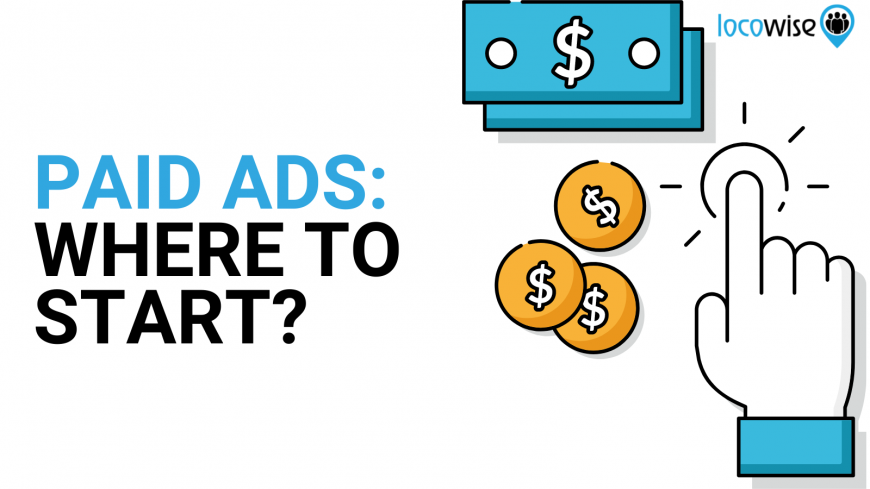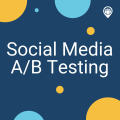Starting paid advertising. Where do you begin?
Sahail Ashraf posted on 10 November 2021
If you are considering using paid ads, you need to know where to start. You can lose a lot of money if you’re not careful. Here, we get you going with paid ads.

Social media, like email or SEO, is a marketing channel. It is true that, as with most channels, “free” is only good for so long. Obviously, for any business looking for success through paid and organic social media, it won’t come down to just one or the other. On the contrary, paid campaigns may actually help your organic social media efforts in the long run.
But where to start, and what is it anyway?
We’ve put together a quick guide that should help you get to grips with paid ads on social media, and navigate the often confusing paid landscape. Starting paid advertising should be a fun process, and not intimidating. Hopefully, we can make that happen.
A few examples of paid social media include PPC, sponsored content, and influencer marketing. You can recognise a paid social media advertisement by looking for a “sponsored” or “promoted” tag near the post.
The nature of each social media channel differs from the next. Instagram is primarily visual, Twitter offers short-form content, Facebook features a marketplace for shopping enthusiasts, and LinkedIn is for networking professionals. As a result, paid social media on each platform varies according to the campaign and audience.
Getting started
You firstly need to work out what your paid social media advertising objective is. This is a crucial part of the overall process, because you do need to know what you want to achieve.
The process gives you a goal to achieve and you need to know what that goal is before you settle down into the paid part. Focus on the objectives that will suit your brand and it’s requirements and business goals. For example:
- You might need people to visit your website
- You may want to have them visit a lead page that captures emails
- You may want them to make a purchase (rare when it comes to social ads but still happens)
Once you know your objectives, it’s about looking at the budget issues next.
The good news about social media ads is that they can be targeted much more than ads through some other means. This means you can carefully manage the budget you have, leaving less chance of any nasty surprises. For example, Facebook’s advertising offers are well known for being incredibly targeted, so you can easily make sure that your budget choices are intelligent and focused on maximum ROI.
Social ads are priced on the length of the campaign and your own goals as regards impressions and actions. This means that you have full control over what is happening. The sensible thing to do is focus on the goals you have identified, and then frame those goals as actions within a certain timeframe. This way, you can set up a campaign that is cost-effective.
You can set a limit so that the campaign won’t spend more than you’ve allowed for this type of advertising. As you reach the limit you have set, keep an eye on your credit card balance because these campaigns automatically stop running when the money is depleted. While it sounds beneficial, it can be annoying at best and detrimental at worst to your campaign. A crash in campaign momentum can lead to lost leads and momentum for your campaign if your campaign budget exceeds your credit card limit. Even just a few hours of downtime to pay the balance can be detrimental.
Using Facebook for paid advertising
Facebook Targeted Ads are a great way to advertise on the social network. This is the most robust ad platform available and for good reason. It is built on a bidding system, an advertising process in which advertisers place bids based on their target audience’s preferences. This bid will be entered in a lottery, giving it a chance to be selected and displayed to that audience. Ads on Facebook can narrow an audience to just a few hundred people based on their geography, interests, and demographics. Small businesses can benefit from this, even if it may not benefit most large corporations.
Using Twitter for paid advertising
Your Twitter ad settings will depend on your budget – such as how often, where, and what type of ad to run. You can choose from different formats when you run social ads on Twitter based on your goals.
Using Instagram for paid ads
You can create an ecommerce store right within the app if you have a business profile on Instagram. If you don’t have a website that accepts payments, or if you are in the early stages of ecommerce, this is a plus.
Test, test
The final piece of advice we can offer is to test absolutely every ad move you make. Paid ads can go disastrously wrong, but by taking a sensible view with goals and objectives, and watching your budget, you should be able to move towards good results quickly.
You can A/B test your ads to see which headlines and content work the best, as well as which images and videos are effective. But if you don’t test, you could find that you are not making as much ROI as you could, or even that you are wasting money.
Are you a social media manager? Test drive Locowise today. It has some of the best metrics available for the job you do.




